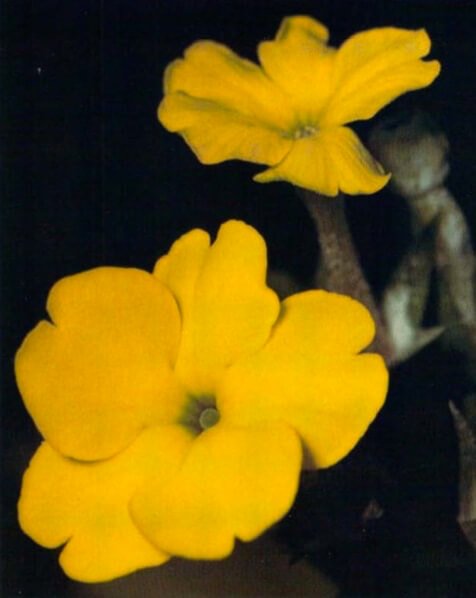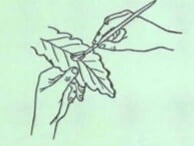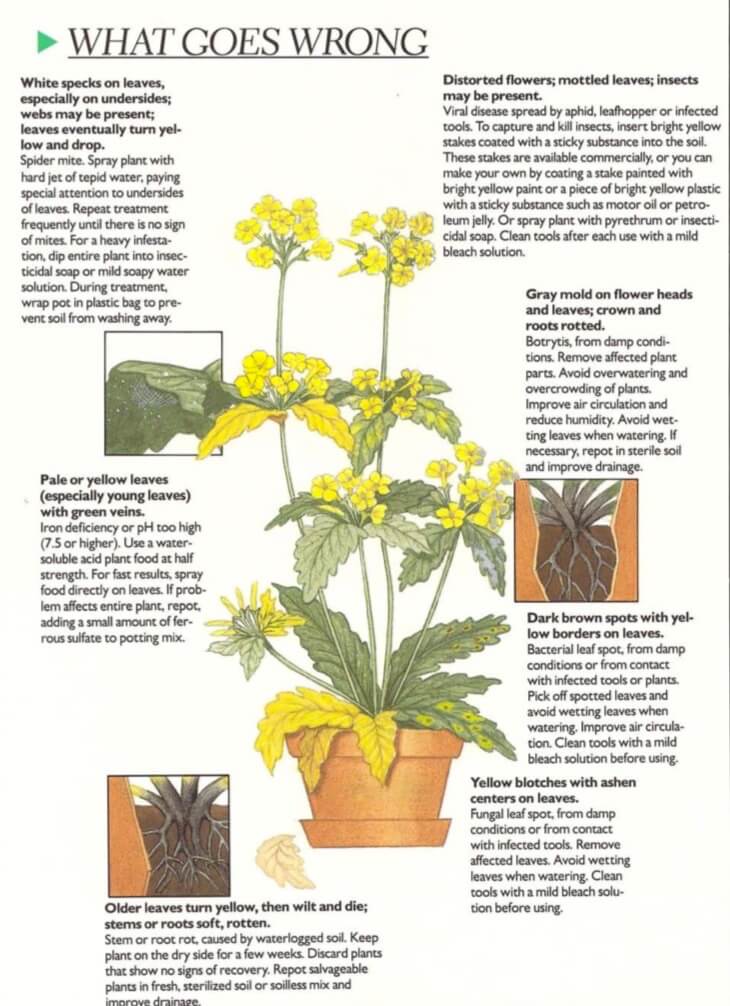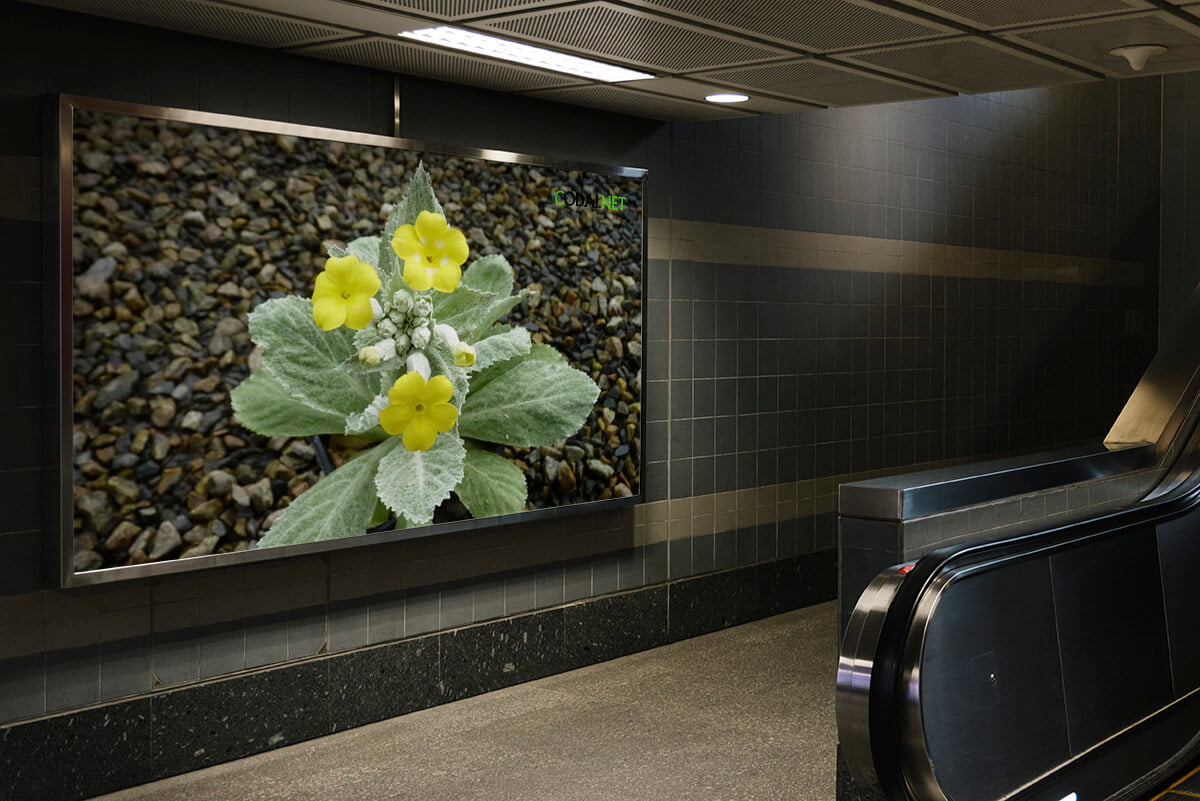[Ebook Việt Hoá] The Instant Guide to Healthy Houseplants (Hướng dẫn tức thời để chăm cây trong nhà khoẻ mạnh), Chi Primula - Chi Anh Thảo
[Ebook Việt Hoá] The Instant Guide to Healthy Houseplants: Primula x kiwesis (Kew primrose)
- Nguồn: [Ebook Việt Hoá] The Instant Guide to Healthy Houseplants (Hướng dẫn tức thời để chăm cây trong nhà khoẻ mạnh)
- Biên tập: Dũng Cá Xinh
- Biên dịch: Team Codai.net
English
The Kew primrose is named for the Royal Botanic Gardens atKew, England, where it was discovered as a sterile hybrid in 1897. Later, botanists managed to produce a fertile hybrid from the same parent plants, Primula fioribunda and Primula verticillata. This hybrid is a robust plant that does well in a greenhouse or on a sunny windowsill, provided it is kept in humid conditions. The Kew primrose thrives in cool temperatures and bears its bright yellow flowers in both winter and spring.

Light
Requires sunlight or very strong indirect light to bloom but should be protected fromfull sunlight in hot weather. Insummer. place plant in north-facing window.
Water
Keep soil thoroughly moist but not soggy. Soil should never be allowed to dry out. Avoid get- ting water on leaves when watering from above. or water from below. using a capillary mat to provide constant water and extra humidity.
Humidity
Plant requires high humidity. but misting leaves may encourage leaf or crown rot. Keep pot in a tray of wet pebbles or damp sand or set pot on a capillary mat. Plant needs good air circulation to prevent fungal infection.
Temperature
In summer. keep at 60-70°F (16-21°C). In winter, keep at 50-60°F (13-16°C) during the day. 45-50°F (7-10°C) at night.
Propagation
Sow seed in March through container filled with appropriate soil mix. (See above.) Do not cover seed with soil. Cover container with plastic wrap or glass and set in a tray of water until surface of soil is damp. Then place container in indirect light at 55-60°F (13- 16°c ). When seedlings have several leaves, thin out to 2 in (5 cm) apart in tray or pot individually in 4 inches (10-cm) pots.
Repotting
A mature plant should be grown in a 6 in (15cm) pot. Divide plant in May by pulling apart into small plantlets. Replant sections in separate pots. Add a teaspoon each of bone meal and slow release fertilizer to soil mix described above.
Feeding
Feed every 14 days in winter and spring with water-soluble flowering-plant fertilizer at half strength. When flowering ends in late spring, stop feeding until late summer. Feed monthly in late summer through fall.
Soil
Use equal parts screened peat, soilless potting mix and sharp sand. Place a layer of broken crockery in the bottom of the pot to provide drainage.
Pruning
Pinch off early flower buds if plant is small or looks weak.
Cleaning
Remove dust particles from mealy leaves with soft brush. Do not wipe or mist leaves.

What Goes Wrong

- Older leaves turn yellow, then wilt and die; stems or roots soft, rotten: Stem or root rot, caused by waterlogged soil. Keep plant on the dry side for a few weeks. Discard plants that show no signs of recovery. Repot salvageable plants in fresh, sterilized soil or soilless mix and improve drainage.
- White specks on leaves, especially on undersides; webs may be present; leaves eventually turn yellow and drop: Spider mite. Spray plant with hard jet of tepid water, paying special attention to undersides of leaves. Repeat treatment frequently until there is no sign of mites. For a heavy infestation, dip entire plant into insecticidal soap or mild soapy water solution. During treatment, wrap pot in plastic bag to prevent soil from washing away.
- Pale or yellow leaves (especially young leaves) with green veins: Iron deficiency or pH too high (7.5 or higher). Use a water-soluble acid plant food at half strength. For fast results, spray food directly on leaves. If problem affects entire plant, repot, adding a small amount of ferrous sulfate to potting mix.
- Distorted flowers; mottled leaves; insects may be present: Viral disease spread by aphid, leaf hopper or infected tools. To capture and kill insects, insert bright yellow stakes coated with a sticky substance into the soil. These stakes are available commercially, or you can make your own by coating a stake painted with bright yellow paint or a piece of bright yellow plastic with a sticky substance such as motor oil or petroleum jelly. Or spray plant with pyrethrum or insecticidal soap. Clean tools after each use with a mild bleach solution.
- Gray mold on flower heads and leaves; crown and roots rotted: Botrytis, from damp conditions. Remove affected plant parts. Avoid overwatering and over crowding of plants. Improve air circulation and reduce humidity. Avoid wetting leaves when watering. If necessary, repot in sterile soil and improve drainage.
- Dark brown spots with yellow borders on leaves. Bacterial leaf spot, from damp conditions or from contact with infected tools or plants. Pick off spotted leaves and avoid wetting leaves when watering. Improve air circulation. Clean tools with a mild bleach solution before using.
- Yellow blotches with ashen centers on leaves: Fungal leaf spot, from damp conditions or from contact with infected tools. Remove affected leaves. Avoid wetting leaves when watering. Clean tools with a mild bleach solution before using.
Tiếng Việt

Ánh sáng
Cần có ánh sáng mặt trời hoặc ánh sáng gián tiếp rất mạnh để hoa nở nhưng cần được bảo vệ khỏi ánh nắng trực tiếp khi trời nắng nóng. Vào mùa hè, đặt cây ở cửa sổ quay mặt về hướng Bắc.
Nước
Giữ cho đất luôn ẩm nhưng không bị sũng nước. Đất không bao giờ được để khô. Tránh để nước dính vào lá khi tưới từ trên cao xuống. hoặc nước từ bên dưới. sử dụng tấm lót mao quản để cung cấp nước ổn định và thêm độ ẩm.
Độ ẩm
Cây yêu cầu độ ẩm cao. nhưng lá phun sương có thể làm thối lá hoặc ngọn. Đặt chậu trong khay đá cuội ẩm ướt hoặc cát ẩm hoặc đặt chậu trên một tấm lót mao dẫn. Cây cần lưu thông không khí tốt để ngăn ngừa nhiễm nấm.
Nhiệt độ
Vào mùa hè giữ ở 60-70 độ F (16-21 độ C). Vào mùa đông, giữ ở 50-60 độ F (13-16 độ C) trong ngày. 45-50 độ F (7-10 độ C) vào ban đêm.
Nhân giống
Gieo hạt vào tháng 3 qua thùng chứa đầy hỗn hợp đất thích hợp. (Xem phần trên) Không phủ đất lên hạt giống. Đậy thùng bằng màng bọc thực phẩm hoặc thủy tinh và đặt trong khay nước cho đến khi bề mặt đất ẩm. Sau đó đặt vật chứa dưới ánh sáng gián tiếp ở 55-60 độ F (13-16 độ C). Khi cây con có nhiều lá, tỉa mỏng cách nhau 2 inch (5 cm) trong khay hoặc chậu riêng lẻ trong bầu 4 inch (10 cm).
Thay chậu
Cây trưởng thành nên được trồng trong chậu 6 inch (15cm). Chia cây vào tháng 5 bằng cách tách thành các cây con nhỏ. Trồng lại các phần trong các chậu riêng biệt. Thêm một thìa cà phê bột xương và phân bón tan chậm vào hỗn hợp đất được mô tả ở trên.
Bón phân
Bón phân 14 ngày một lần vào mùa đông và mùa xuân bằng phân bón thực vật có hoa hòa tan trong nước ở nồng độ một nửa. Khi ra hoa kết thúc vào cuối mùa xuân, ngừng bón phân cho đến cuối mùa hè. Bón phân hàng tháng vào cuối mùa hè đến mùa thu.
Đất
Sử dụng than bùn đã sàng lọc, hỗn hợp có đất và cát sắc với các phần bằng nhau. Đặt một lớp sành sứ vỡ dưới đáy chậu để thoát nước.
Cắt tỉa
Ngắt những nụ hoa non nếu cây còn nhỏ hoặc trông yếu ớt.
Làm sạch
Dùng chổi mềm loại bỏ các hạt bụi bám trên lá. Không lau hoặc phun sương cho lá.

Những vấn đề có thể xảy ra

- Các lá già chuyển sang màu vàng, sau đó héo và chết; Thân hoặc rễ mềm, thối: Thân hoặc rễ bị thối do đất bị úng. Giữ cây ở nơi khô ráo trong vài tuần. Loại bỏ những cây không có dấu hiệu phục hồi. Thay cây có thể tận dụng trong đất tươi, đã khử trùng hoặc hỗn hợp không có đất và cải thiện hệ thống thoát nước.
- Các đốm trắng trên lá, đặc biệt là ở mặt dưới; xuất hiện mạng nhện; cuối cùng lá chuyển sang màu vàng và rụng: Nhện ve. Phun cây bằng tia nước cứng, đặc biệt chú ý đến mặt dưới của lá. Lặp lại điều trị thường xuyên cho đến khi không còn dấu hiệu của ve. Đối với nhiễm trùng nặng, hãy nhúng toàn bộ cây vào xà phòng diệt côn trùng hoặc dung dịch nước xà phòng nhẹ. Trong quá trình xử lý, bọc trong túi ni lông để tránh đất rửa trôi.
- Lá nhợt nhạt hoặc vàng (đặc biệt là lá non) có gân xanh: Thiếu sắt hoặc pH quá cao (7,5 hoặc cao hơn). Sử dụng phân bón có tính axit hòa tan trong nước với nồng độ một nửa. Để có hiệu quả nhanh, phun trực tiếp phân bón lên lá. Nếu vấn đề ảnh hưởng đến toàn bộ cây, hãy thay chậu, thêm một lượng nhỏ sunfat sắt vào hỗn hợp.
- Hoa méo mó; lá đốm; côn trùng có thể có: Bệnh do virus lây lan do rệp, rầy lá hoặc các dụng cụ bị nhiễm bệnh. Để bắt và tiêu diệt côn trùng, cắm những chiếc cọc màu vàng tươi có phủ chất dính vào đất. Những chiếc cọc này có bán trên thị trường, hoặc bạn có thể tự chế tạo bằng cách phủ một lớp sơn màu vàng tươi hoặc một miếng nhựa màu vàng tươi với chất kết dính như dầu máy hoặc dầu hỏa. Hoặc phun cây hoặc xà phòng diệt côn trùng. Vệ sinh dụng cụ sau mỗi lần sử dụng bằng dung dịch tẩy nhẹ.
- Mốc xám trên đầu hoa và lá; thân và rễ bị thối rữa: Bệnh thối rữa, do điều kiện ẩm ướt. Loại bỏ các bộ phận của cây bị ảnh hưởng. Tránh tưới quá nhiều và quá nhiều cây. Cải thiện lưu thông không khí và giảm độ ẩm. Tránh làm ướt lá khi tưới. Nếu cần, thay chậu trong đất vô trùng và cải thiện hệ thống thoát nước.
- Các đốm nâu sẫm với viền vàng trên lá. Bệnh đốm lá do vi khuẩn, do điều kiện ẩm ướt hoặc do tiếp xúc với dụng cụ hoặc cây bị nhiễm bệnh. Nhặt bỏ những lá bị đốm và tránh làm ướt lá khi tưới. Cải thiện lưu thông không khí. Làm sạch dụng cụ bằng dung dịch tẩy nhẹ trước khi sử dụng.
- Các đốm vàng có trên lá: Đốm lá do nấm, do ẩm ướt hoặc do tiếp xúc với các dụng cụ bị nhiễm bệnh. Loại bỏ các lá bị ảnh hưởng. Tránh làm ướt lá khi tưới. Làm sạch dụng cụ bằng dung dịch tẩy nhẹ trước khi sử dụng.



